Soviet modernist: Rem Koolhaas-designed Garage Museum of Contemporary Art opens in Moscow
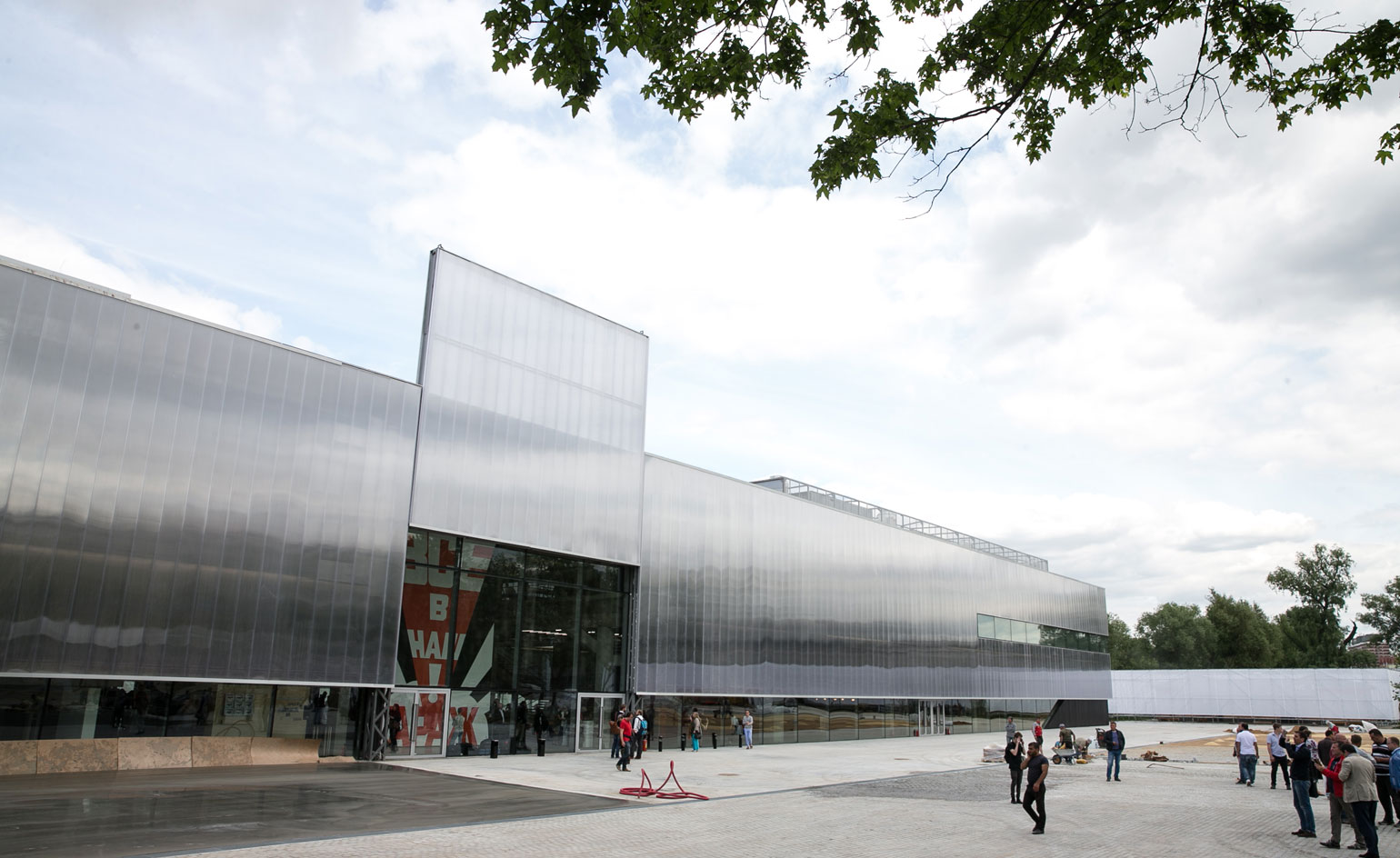
Architecture studio OMA has resurrected a 1960s Soviet Modernist ruin as a contemporary art museum in Moscow's Gorky Park, restoring original features and wrapping the two-storey space in a gleaming polycarbonate façade.
The 5,400 sq m building is a new permanent home for the Garage art centre founded in 2008 by art collector and philanthropist Dasha Zhukova and named after the centre's first location, the Konstantin Melnikov-designed Bakhmetevsky Bus Garage. More recently, a nearby pavilion designed by Japanese architect Shigeru Ban has provided a temporary home.
The new structure looks nothing like its Brezhnev-era predecessor, the 1,200-seat Vremena Goda restaurant that OMA founder Rem Koolhaas first saw when he visited Moscow in his twenties.
'What we tried to do was to preserve some of the history of its decay. For me, the great fallacy of the whole preservation movement is that it can only preserve great monuments,' says Koolhaas.
New architectural interventions include a double-height lobby that accommodates large-scale commissioned projects such as the debut Come to Garage! painting by Russian artist Eric Bulatov.
The double layered translucent polycarbonate façade also acts as a space in which to hide the building's electrical services while two 11-metre wide panels on either side of the building slide upwards revealing views in- and outwards. Garage curator Kate Fowle says this creates a unique 'visual interface' with the park that has also received something of a facelift with manicured lawns and an artificial beach where young Moscovites suntan on sculptural recliners.
According to Koolhaas, the generous dimensions of 1960s Soviet architecture offered a unique chance to experiment with the act of preservation in a 'radical' way adding galleries, education facilities, an auditorium, and a rather utilitarian-looking cafe.
Inside, original brickwork has been left exposed while 'found' features like a crumbling mosaic artwork and moss-green ceramic tiles - once ubiquitous in Soviet interiors - are coupled with contemporary concrete and birchwood floors.
OMA's innovative design stands in contrast to Moscow's relatively conservative art scene where political works are especially still perceived as highly controversial. The inaugural programme avoided any such issues with the likes of Yayoi Kusama's playful works that included several of the park's trees sheathed in the artist's trademark polkadot pattern, Rirkrit Tiravanija's Ping-Pong Club Moscow, and a small concrete space that will eventually contain a work made from nuclear waste. It is 'scheduled' to arrive post-treatment in 3015.
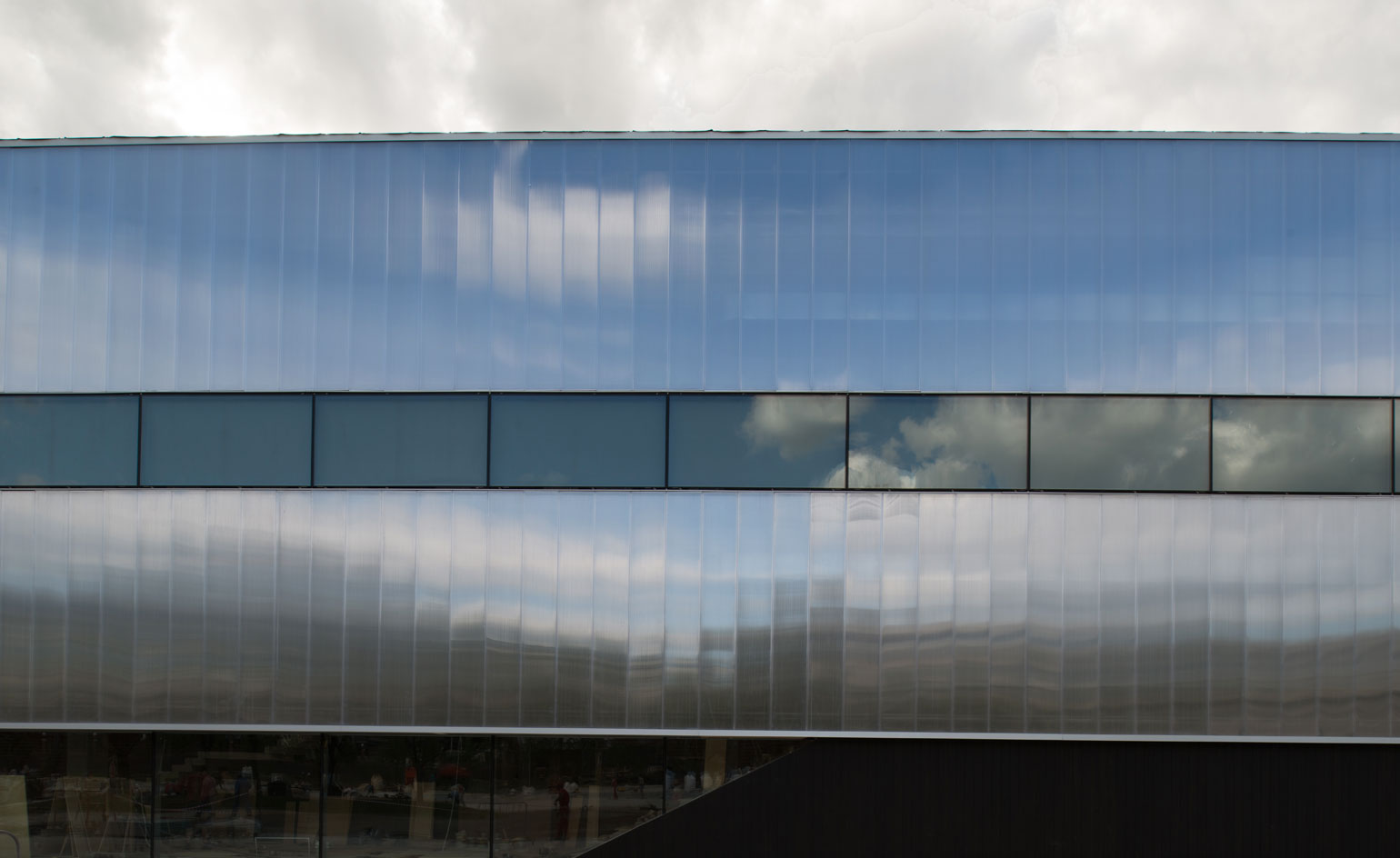
With sleek, geometrical lines and an emphasis on horizontality and modernist traits, this new architecture reflects OMA founder Rem Koolhaas's desire to retain elements of the past. Photography: Yuri Palmin. Courtesy of Garage Museum of Contemporary Art
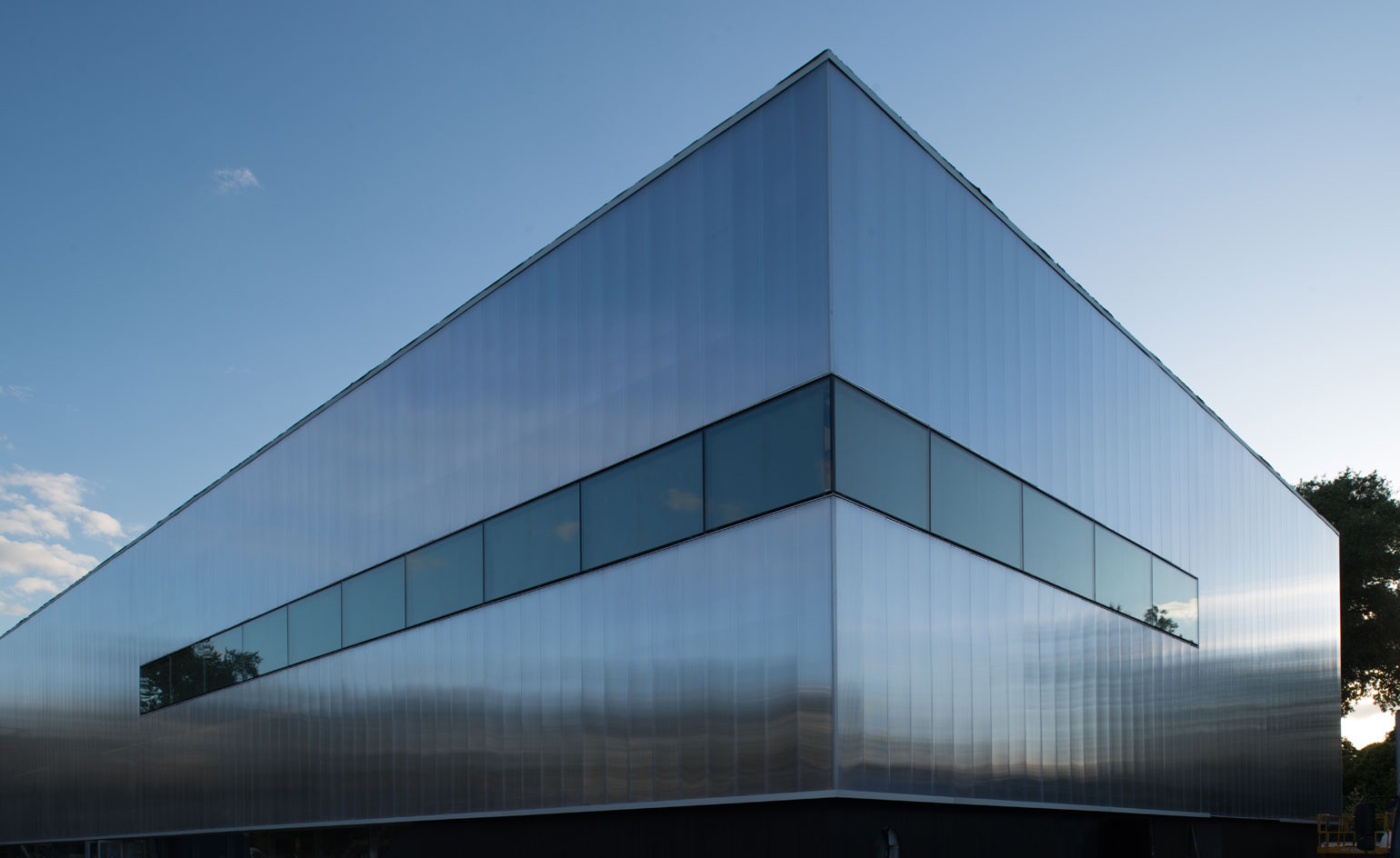
The building's angular appearance is striking in the otherwise completely natural and green environment of Gorky Park. Photography: Yuri Palmin. Courtesy of Garage Museum of Contemporary Art
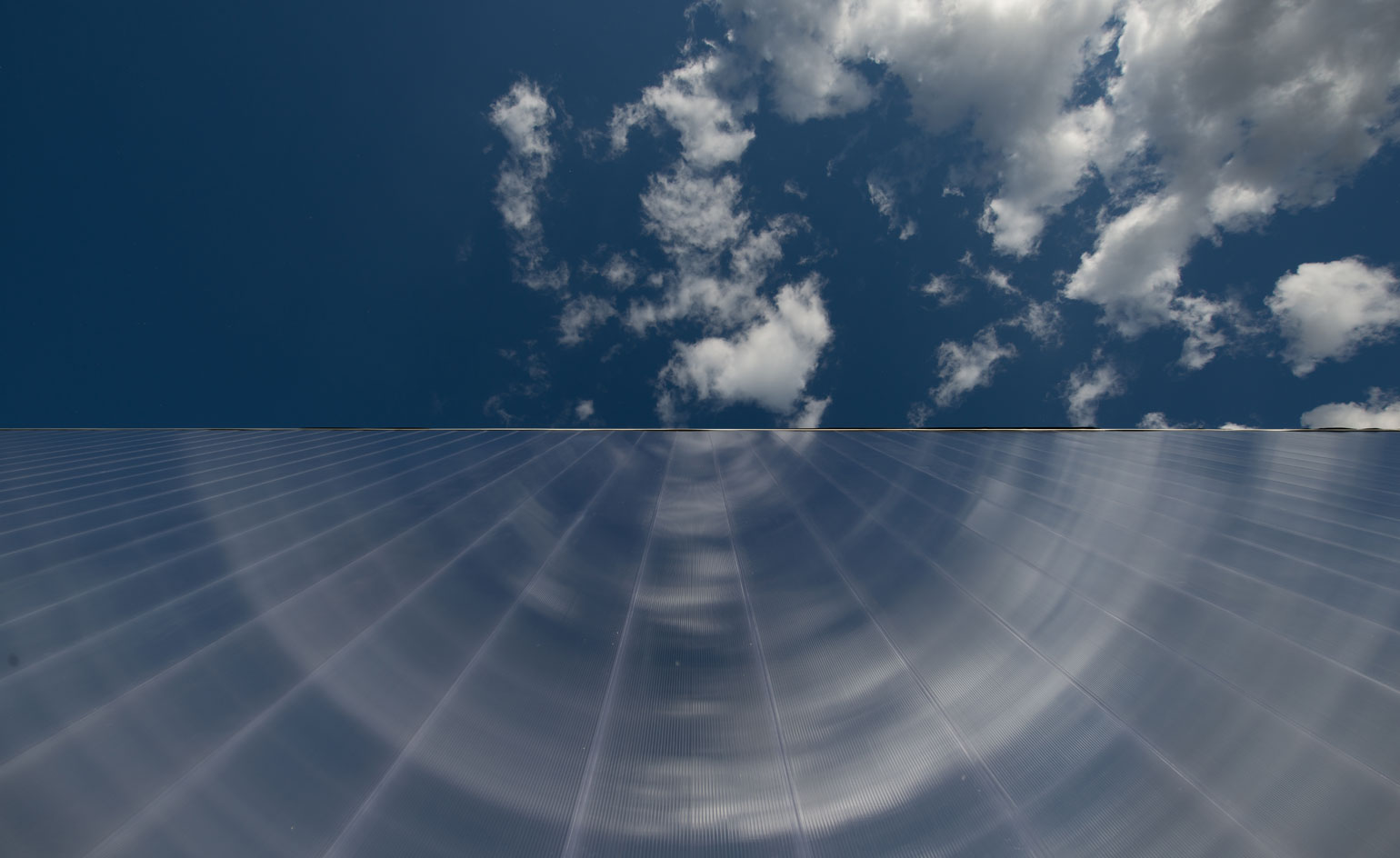
However although the building is modern and very architectural in form, its reflective surfaces also make it one close to nature as it blends into the mirrored environment. Photography: Yuri Palmin. Courtesy of Garage Museum of Contemporary Art
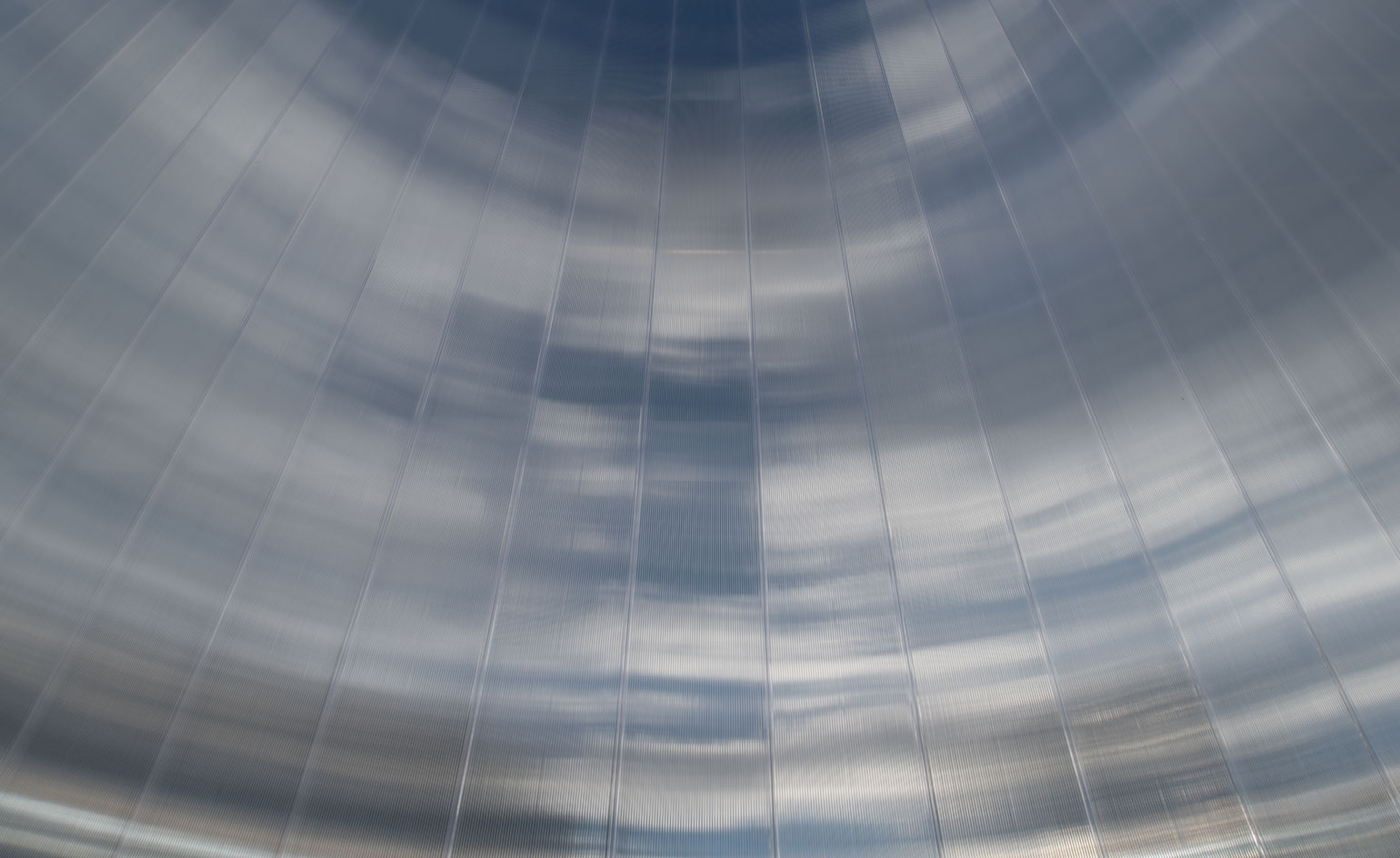
From up close, the facade seems rougher, as though sanded. Photography: Yuri Palmin. Courtesy of Garage Museum of Contemporary Art
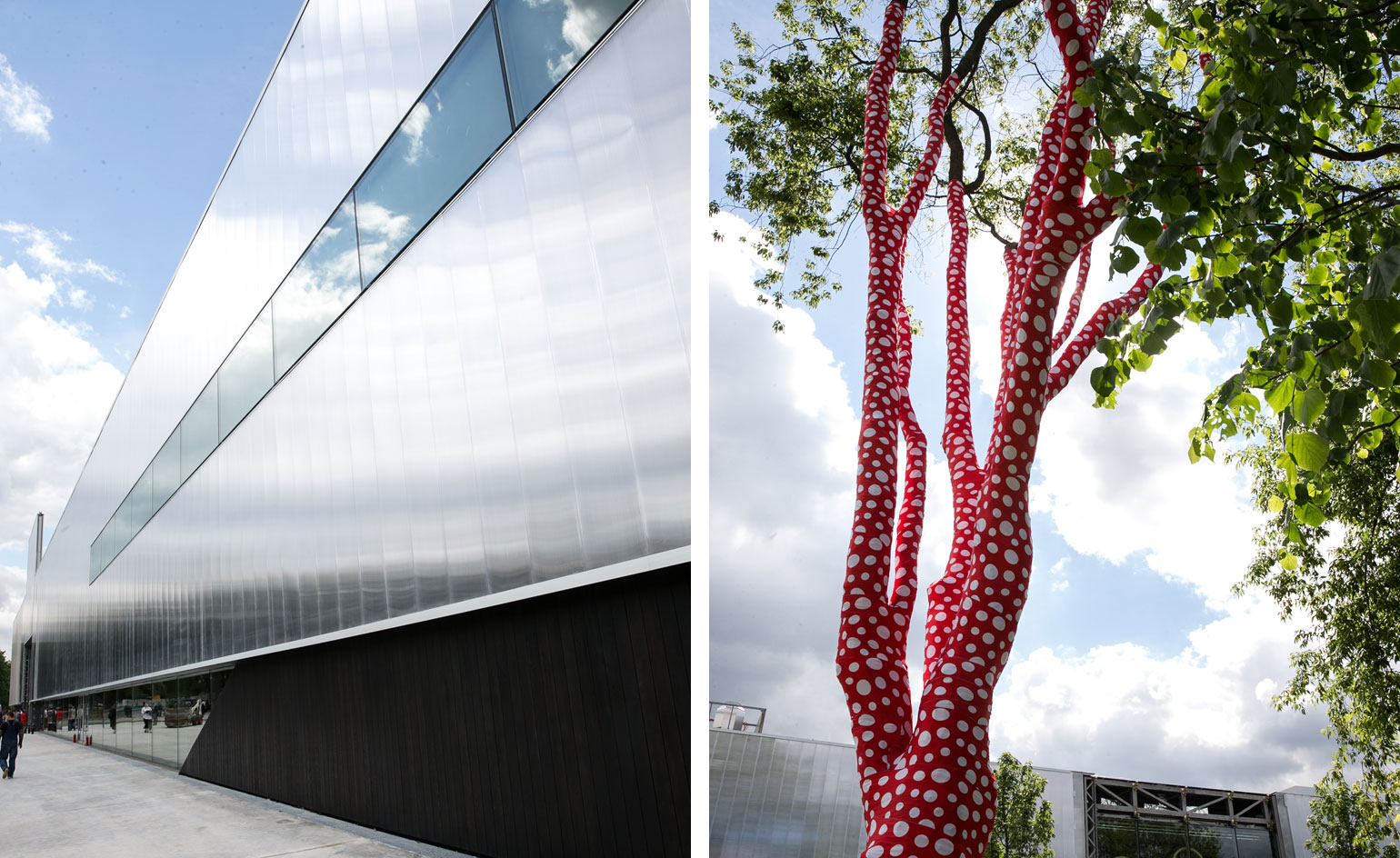
The architecture is complemented with playful designs by Japanese artist Yayoi Kusama: the trees surrounding the museum are covered in red paint and white spots. Photography: David X Prutting/BFAnyc.com
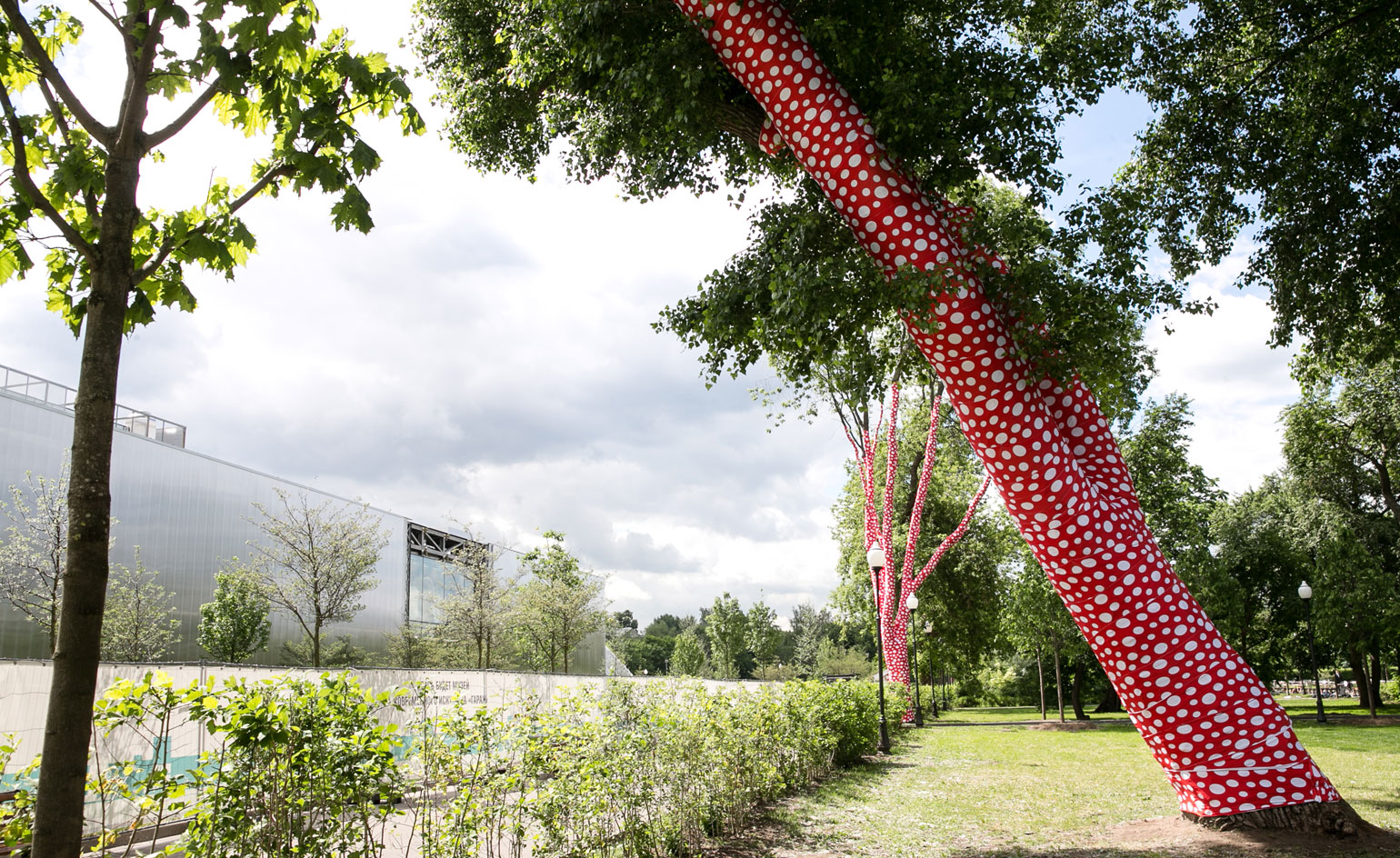
This repetitive pattern, typical of Kusama's work, galvanises the space and gives it colour. Photography: David X Prutting/BFAnyc.com
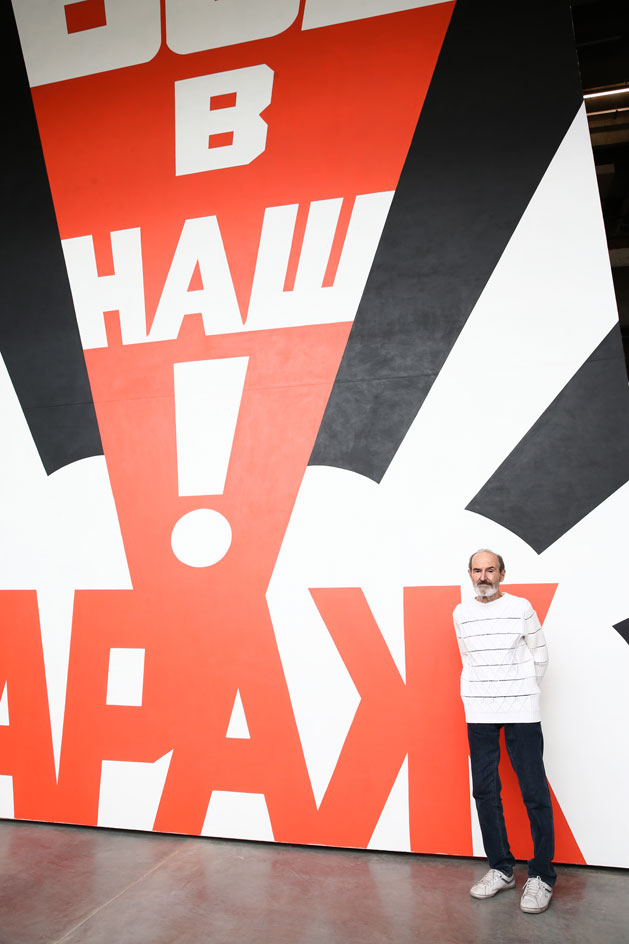
Russian artist Eric Bulatov stands next to his large-scale painting which reads 'Come to Garage!' His pioneering work generally mocks Soviet propaganda and totalitarian regimes. Photography: David X Prutting/BFAnyc.com
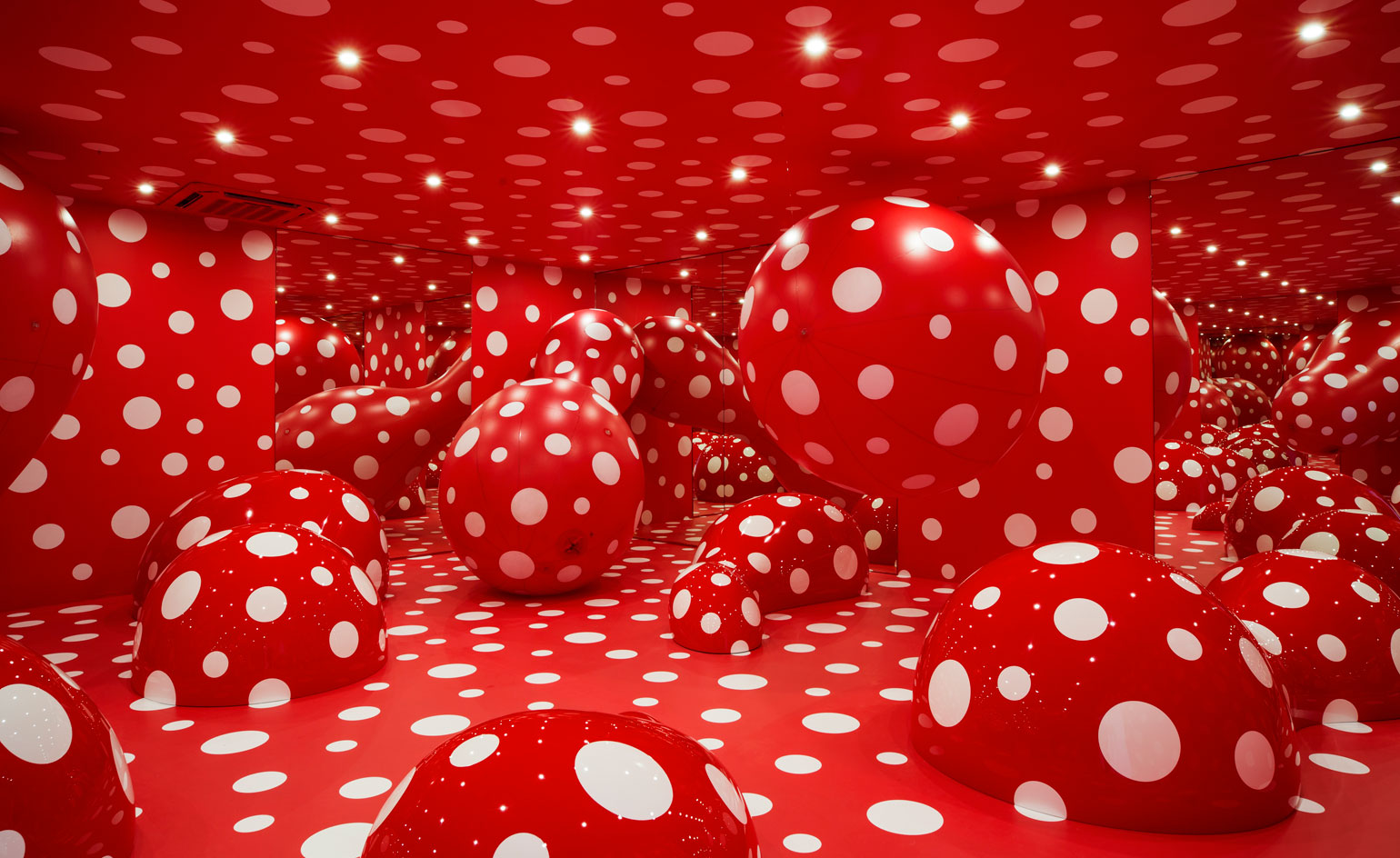
Echoing the outdoor tree installations, Kusama's 'Dots Obsession' room painted in red and covered with white dots refers to the artist's hallucinatory visions of multiplying objects and patterns. Photography: Egor Slizyak. Courtesy of Garage Museum of Contemporary Art
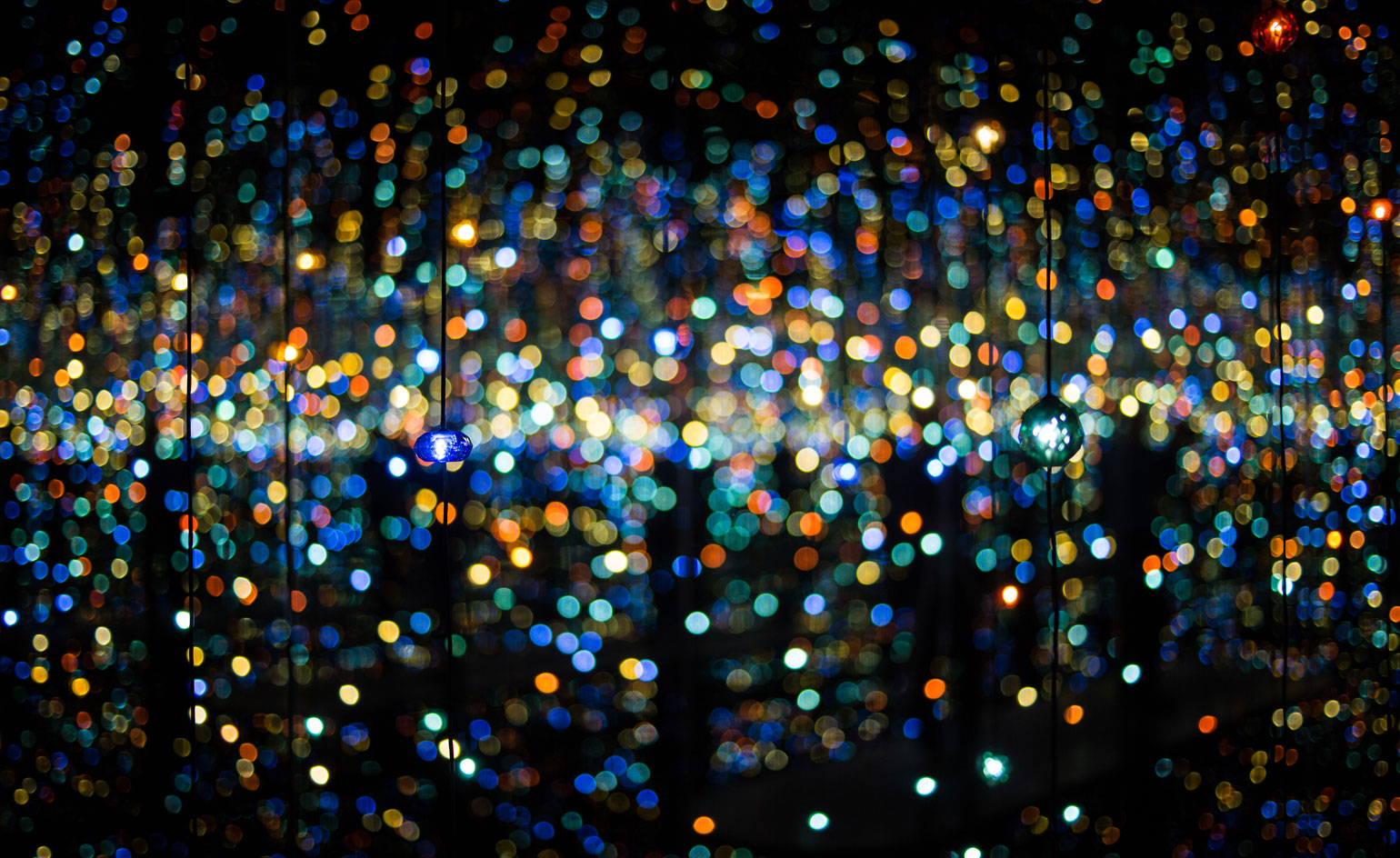
Simarly, Kusama's 'Infinity Room' embodies her way of envisaging the world: a succession of random dots overwhelming and blurring her rational perceptions. Photography: Egor Slizyak. Courtesy of Garage Museum of Contemporary Art
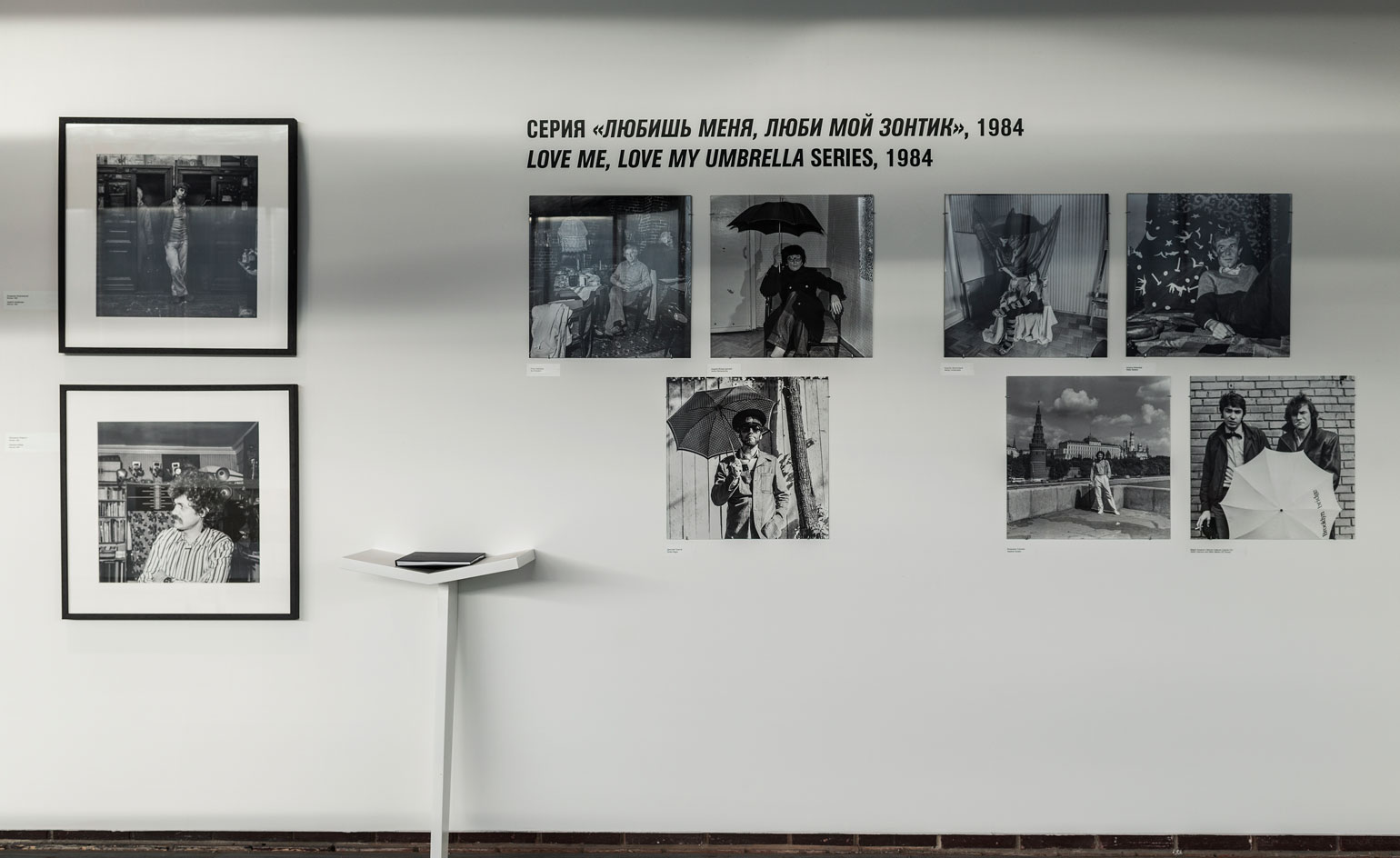
A collection of black and white photogaphs entilted 'Love Me, Love My Umbrella,' whimsically taking after the title of a Jabberheads' song, populates the walls of a dedicated room at Garage. Photography: Egor Slizyak. Courtesy of Garage Museum of Contemporary Art
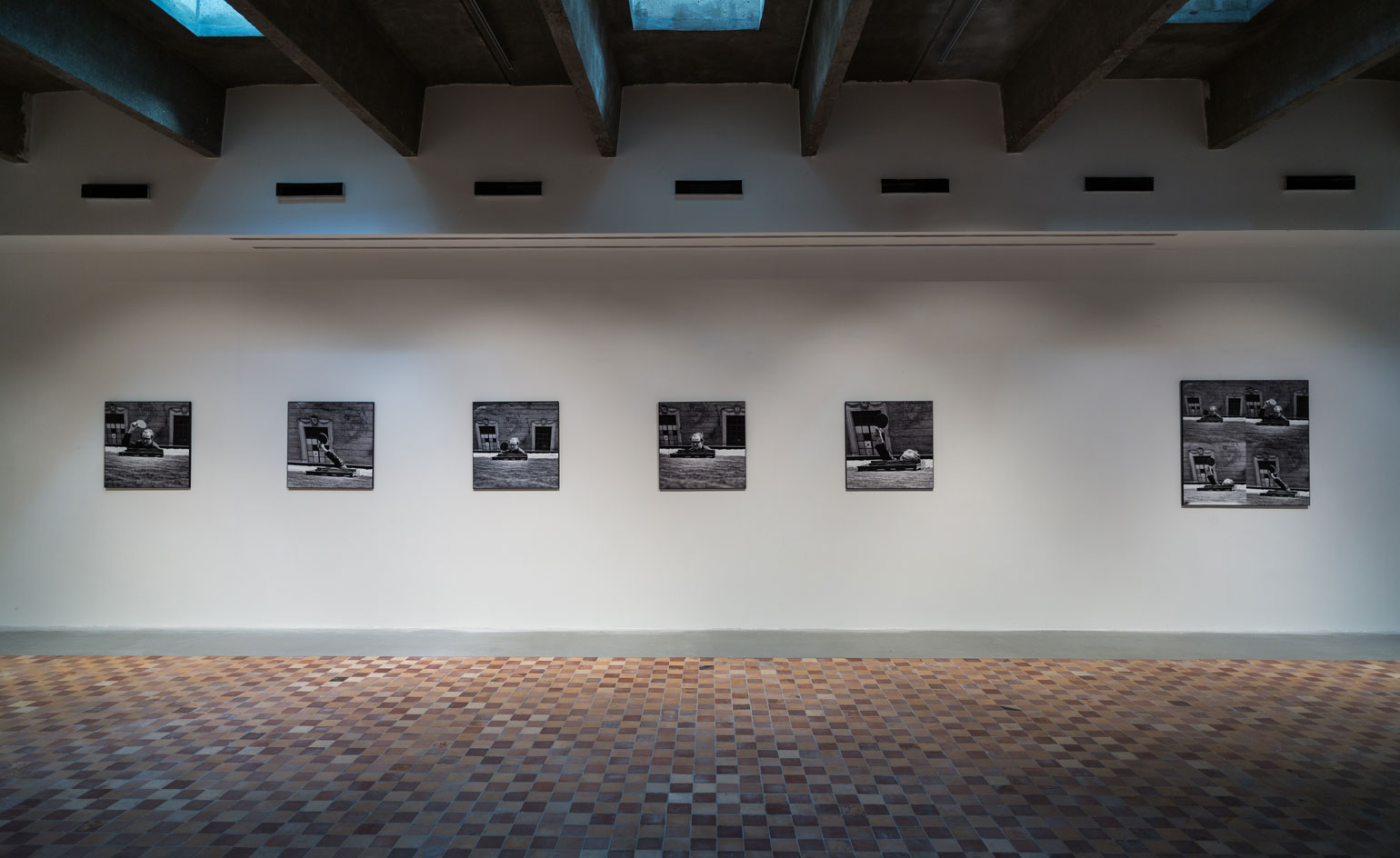
The photographs exhibited are strategically placed, voluntarily leaving the brickwork visible for instance, so as to both compliment the surrounding architecture and the pieces themselves. Photography: Egor Slizyak. Courtesy of Garage Museum of Contemporary Art
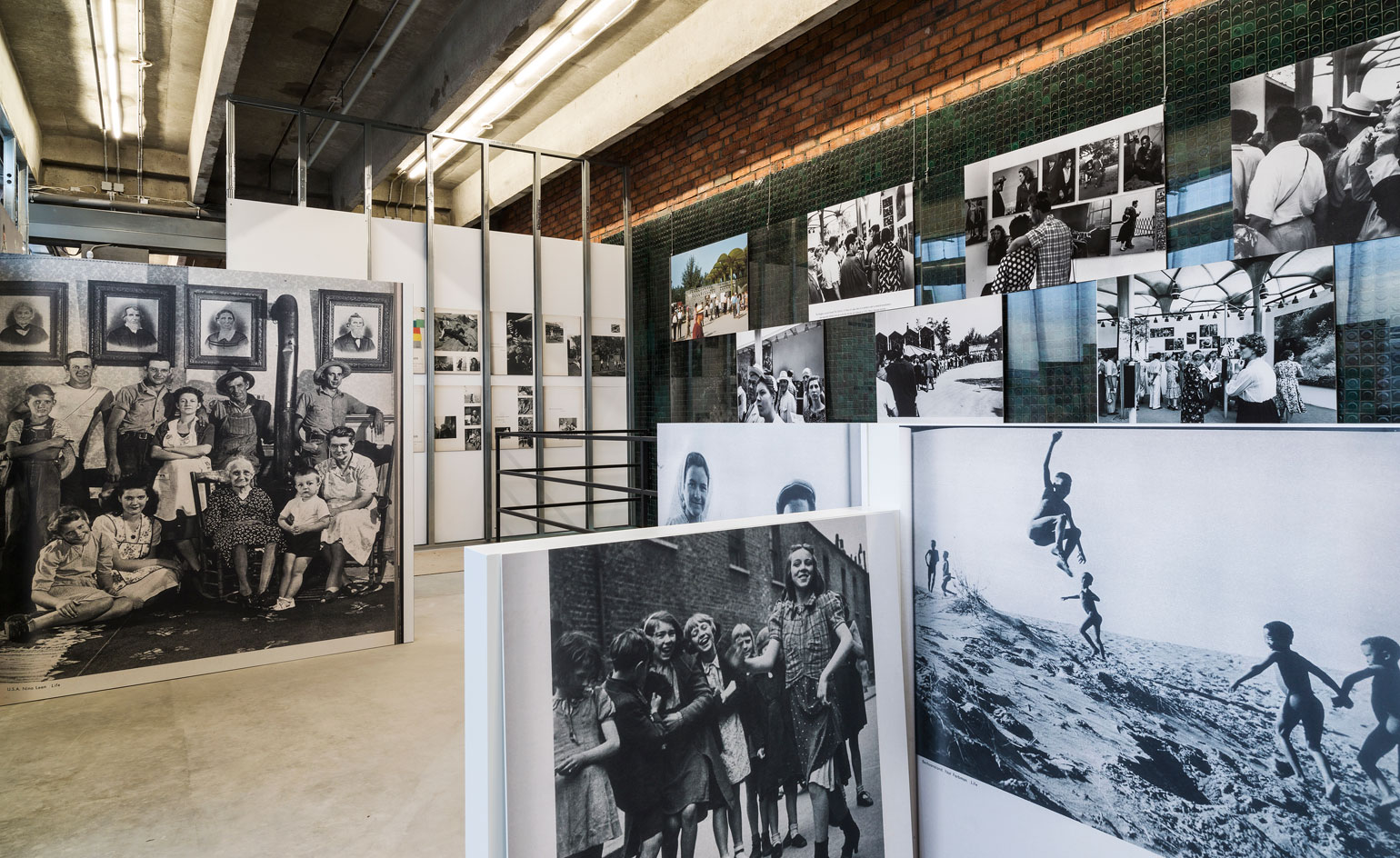
Garage's permanent collection is comprised of documentary and artistic photographs... Photography: Egor Slizyak. Courtesy of Garage Museum of Contemporary Art
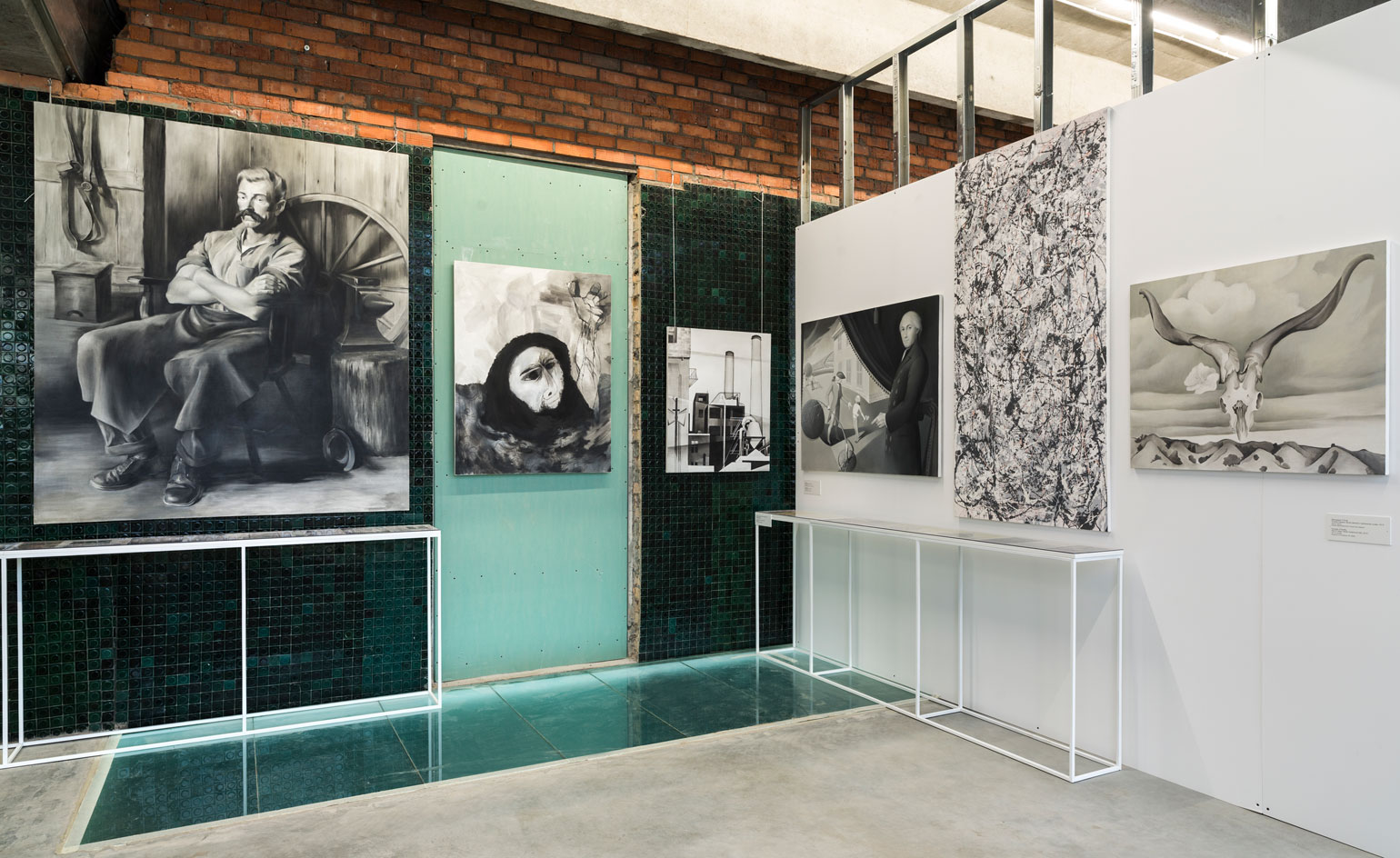
...But also of major paintings by Pollock, Odilon Redon, De Chirico, Dali and many others... Photography: Egor Slizyak. Courtesy of Garage Museum of Contemporary Art
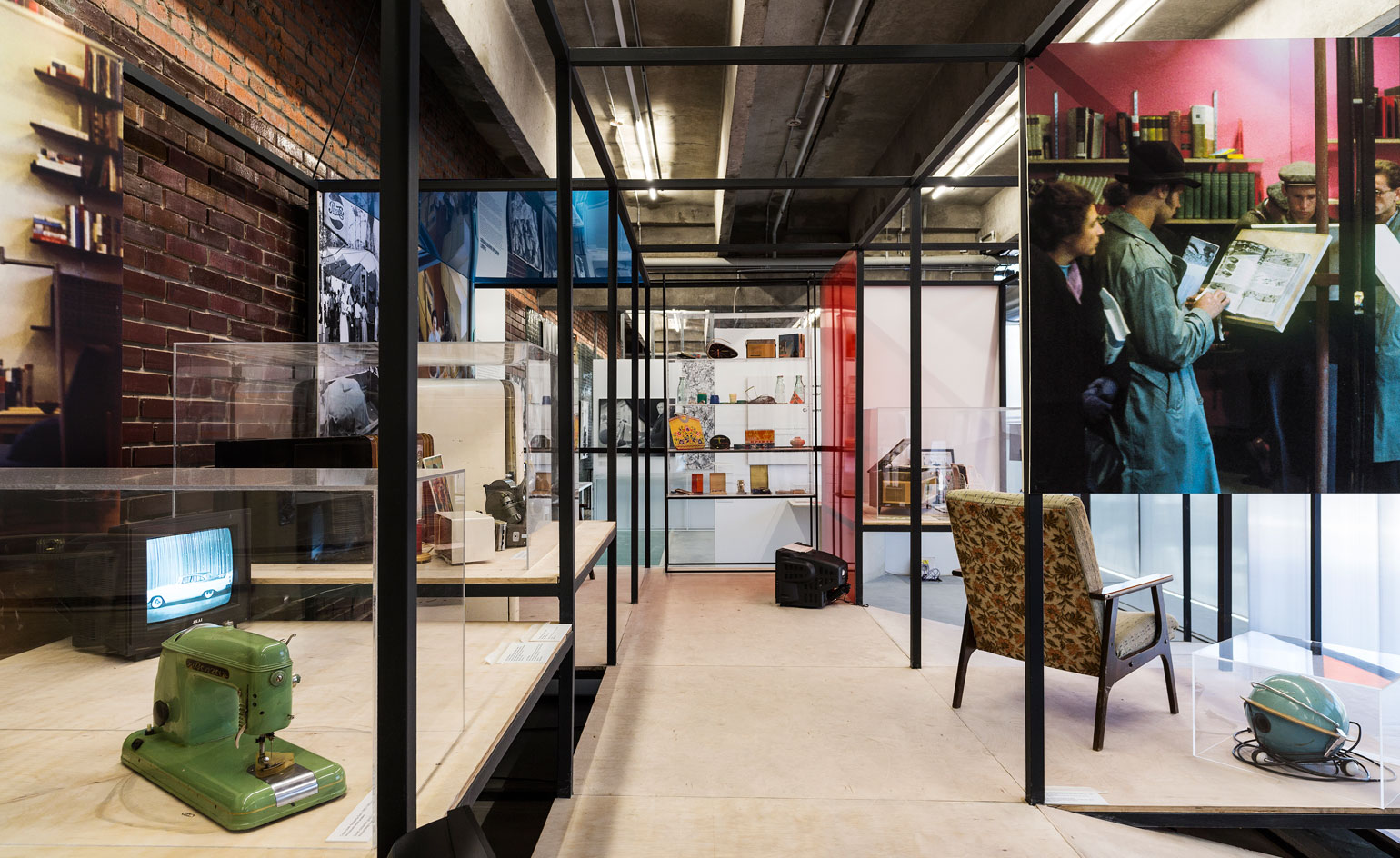
A design corner has been established in the new Garage premises, displaying mundane and precious objects which marked Russian history. Photography: Egor Slizyak. Courtesy of Garage Museum of Contemporary Art
ADDRESS
9/45 Krymsky Val Street
119049, Moscow, Russia
Wallpaper* Newsletter
Receive our daily digest of inspiration, escapism and design stories from around the world direct to your inbox.
Catherine Shaw is a writer, editor and consultant specialising in architecture and design. She has written and contributed to over ten books, including award-winning monographs on art collector and designer Alan Chan, and on architect William Lim's Asian design philosophy. She has also authored books on architect André Fu, on Turkish interior designer Zeynep Fadıllıoğlu, and on Beijing-based OPEN Architecture's most significant cultural projects across China.
-
 This new Vondom outdoor furniture is a breath of fresh air
This new Vondom outdoor furniture is a breath of fresh airDesigned by architect Jean-Marie Massaud, the ‘Pasadena’ collection takes elegance and comfort outdoors
By Simon Mills
-
 Eight designers to know from Rossana Orlandi Gallery’s Milan Design Week 2025 exhibition
Eight designers to know from Rossana Orlandi Gallery’s Milan Design Week 2025 exhibitionWallpaper’s highlights from the mega-exhibition at Rossana Orlandi Gallery include some of the most compelling names in design today
By Anna Solomon
-
 Nikos Koulis brings a cool wearability to high jewellery
Nikos Koulis brings a cool wearability to high jewelleryNikos Koulis experiments with unusual diamond cuts and modern materials in a new collection, ‘Wish’
By Hannah Silver
-
 We explore Franklin Israel’s lesser-known, progressive, deconstructivist architecture
We explore Franklin Israel’s lesser-known, progressive, deconstructivist architectureFranklin Israel, a progressive Californian architect whose life was cut short in 1996 at the age of 50, is celebrated in a new book that examines his work and legacy
By Michael Webb
-
 A new hilltop California home is rooted in the landscape and celebrates views of nature
A new hilltop California home is rooted in the landscape and celebrates views of natureWOJR's California home House of Horns is a meticulously planned modern villa that seeps into its surrounding landscape through a series of sculptural courtyards
By Jonathan Bell
-
 The Frick Collection's expansion by Selldorf Architects is both surgical and delicate
The Frick Collection's expansion by Selldorf Architects is both surgical and delicateThe New York cultural institution gets a $220 million glow-up
By Stephanie Murg
-
 Remembering architect David M Childs (1941-2025) and his New York skyline legacy
Remembering architect David M Childs (1941-2025) and his New York skyline legacyDavid M Childs, a former chairman of architectural powerhouse SOM, has passed away. We celebrate his professional achievements
By Jonathan Bell
-
 The upcoming Zaha Hadid Architects projects set to transform the horizon
The upcoming Zaha Hadid Architects projects set to transform the horizonA peek at Zaha Hadid Architects’ future projects, which will comprise some of the most innovative and intriguing structures in the world
By Anna Solomon
-
 Frank Lloyd Wright’s last house has finally been built – and you can stay there
Frank Lloyd Wright’s last house has finally been built – and you can stay thereFrank Lloyd Wright’s final residential commission, RiverRock, has come to life. But, constructed 66 years after his death, can it be considered a true ‘Wright’?
By Anna Solomon
-
 Heritage and conservation after the fires: what’s next for Los Angeles?
Heritage and conservation after the fires: what’s next for Los Angeles?In the second instalment of our 'Rebuilding LA' series, we explore a way forward for historical treasures under threat
By Mimi Zeiger
-
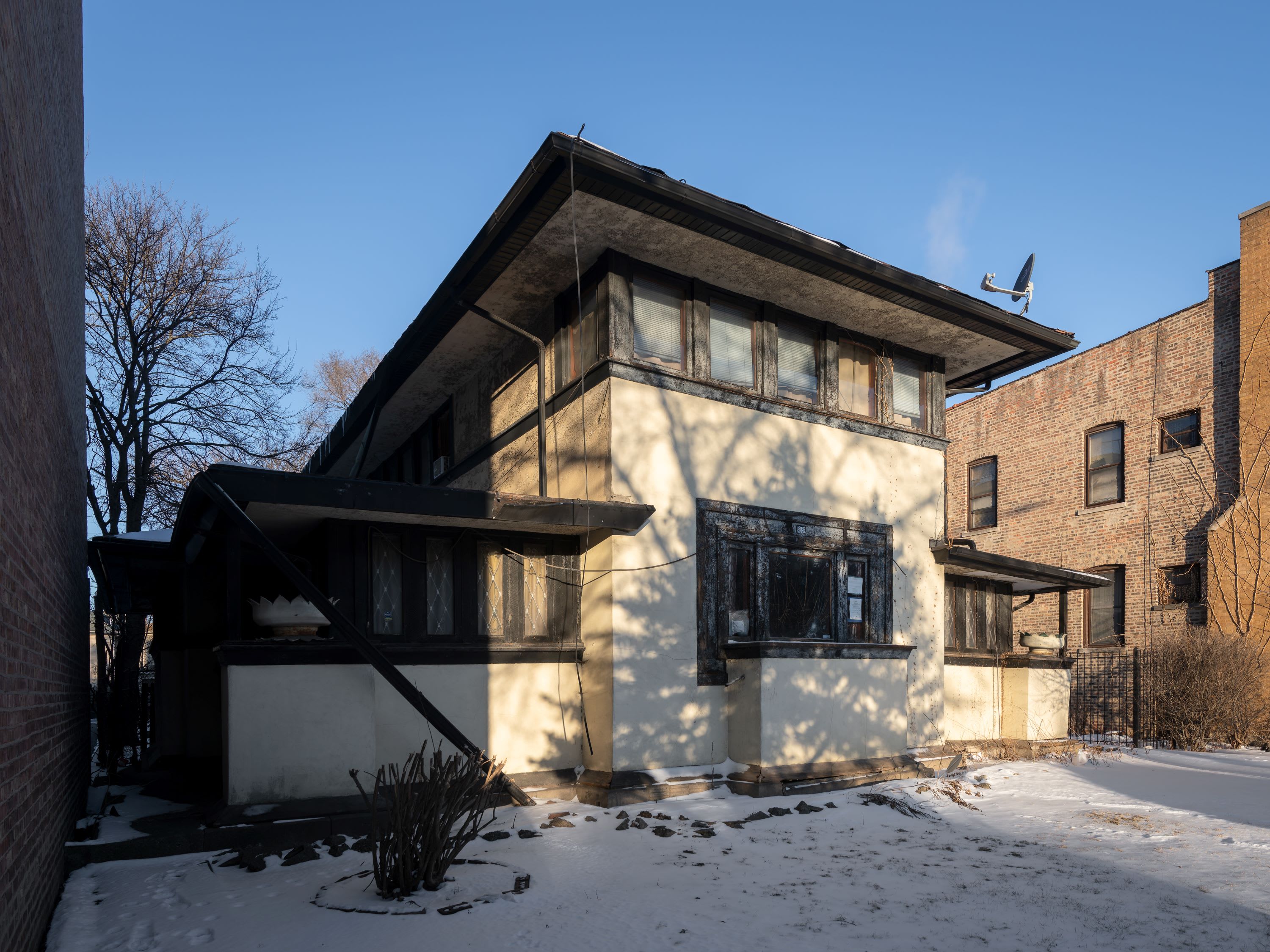 Why this rare Frank Lloyd Wright house is considered one of Chicago’s ‘most endangered’ buildings
Why this rare Frank Lloyd Wright house is considered one of Chicago’s ‘most endangered’ buildingsThe JJ Walser House has sat derelict for six years. But preservationists hope the building will have a vibrant second act
By Anna Fixsen